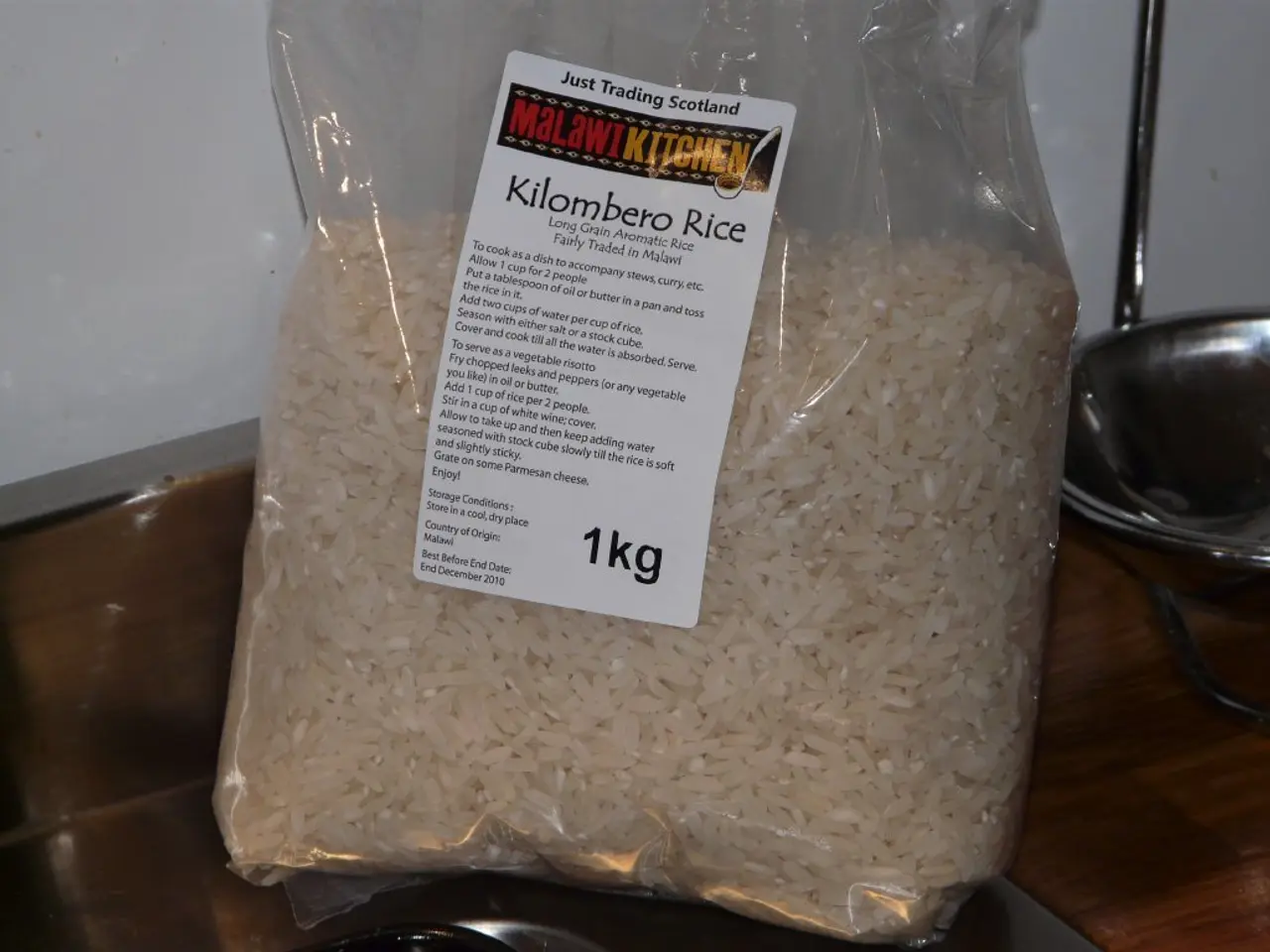Rice prices in Japan escalate during early August.
The average price of rice in Japan increased by 195 yen per 5 kilograms from August 4 to 10, 2025, marking a significant rise in the cost of this staple food.
Key contributing factors to this increase include a slowdown in the release of government stockpiled rice, shifts in rice product sales composition, and steady demand for branded rice.
Reduced government stockpile sales have played a significant role in the price rise. The volume of rice released from government reserves decreased from 13,257 tons to 11,820 tons in that period, lowering the supply pressure on retail prices.
The decline in blended/no-brand rice sales has also contributed to the price increase. Rice varieties that include government-stockpiled rice, known as blended or no-brand rice, accounted for 48% of sales, down 7 percentage points from the previous week. This reduction in the role of these lower-priced rice varieties has likely pushed overall prices higher.
Branded rice, which is typically higher quality or from specific production areas, saw prices increase by 37 yen to 4,239 yen per 5 kg and remained above 4,000 yen since March. This rise likely pushed overall rice prices higher.
The start of new harvest sales is another factor influencing the market dynamics. As rice harvested in the current year becomes available, the sales of stockpiled rice are declining, changing the supply dynamics and market distribution.
In summary, the price rise is mainly driven by reduced government intervention in stockpile releases, shifts in rice product sales composition, and steady demand for branded rice.
It's worth noting that the current price is 1.4 times higher than the same period last year. The amount of government-stockpiled rice released under no-bid contracts during Aug. 4-10 decreased to 11,820 tons from 13,257 tons the previous week.
This price increase may have implications for households and businesses in Japan, potentially affecting food budgets and the overall economy. It's a situation that continues to be monitored closely by economists and policymakers.
[1] Source: Ministry of Agriculture, Forestry and Fisheries [2] Source: Japan Agricultural Cooperatives [3] Source: Nippon Oil Corporation
Read also:
- Deepwater Horizon Oil Spill: BP Faces Record-Breaking Settlement - Dubbed 'Largest Environmental Fine Ever Imposed'
- Lawsuit of Phenomenal Magnitude: FIFA under threat due to Diarra's verdict, accused of player injustice
- Expansion of railway systems, implementation of catenary systems, and combating fires: SNCF adapting to the summer heatwave
- Citizen Thekla Walker, Minister, advises: "Let's focus on our own homes first"







